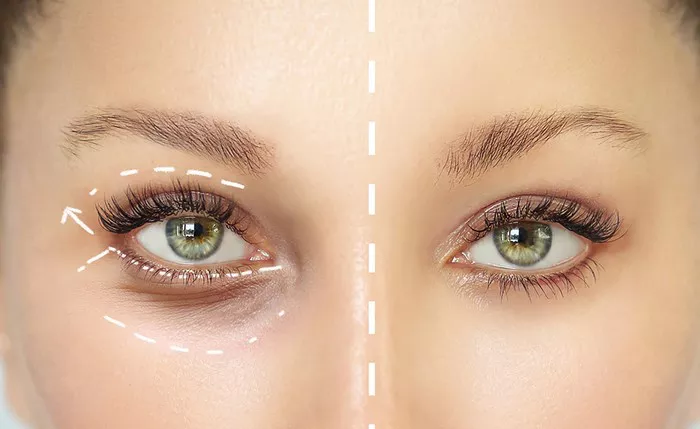Eyelid surgery, also known as blepharoplasty, is a popular cosmetic procedure aimed at rejuvenating the appearance of the eyes. Whether it’s to address droopy eyelids, puffiness, or fine lines, many individuals opt for this surgery to achieve a more youthful and refreshed look. However, like any surgical procedure, eyelid surgery comes with its share of post-operative effects, and bruising is one of the common concerns. In this article, we will explore the intricacies of bruising after eyelid surgery, its duration, causes, and tips to minimize its appearance during the recovery process.
Section 1: Understanding Eyelid Surgery and Bruising
Eyelid surgery is a delicate procedure that involves the removal of excess skin, fat, and muscle from the upper and/or lower eyelids. During the surgery, small incisions are made, and the surgeon carefully manipulates the tissues to achieve the desired aesthetic outcome. While the procedure is generally safe and effective, bruising is a natural response of the body to the trauma caused during surgery.
Bruising occurs due to the breaking of blood vessels during the surgical process. This results in the leakage of blood into the surrounding tissues, leading to the characteristic discoloration of the skin. The severity of bruising can vary depending on the individual’s healing capacity, the extent of the surgery, and the surgeon’s skill. It’s essential to understand that bruising is a temporary side effect, and its duration will differ from person to person.
Section 2: Factors Influencing Bruising Duration
Several factors contribute to the duration and intensity of bruising after eyelid surgery. Understanding these factors can help patients manage their expectations and take appropriate measures to reduce bruising. Some key factors include:
Surgical Technique: The surgical technique used by the surgeon plays a significant role in determining the extent of bruising. Skilled surgeons who use precise and minimally invasive techniques may cause less trauma to the tissues, leading to reduced bruising.
Individual Healing Capacity: Each individual’s body responds differently to surgical trauma. Some people naturally heal faster and experience less bruising, while others may take a bit longer to recover fully.
Preoperative Preparation: Proper preoperative care, including avoiding blood-thinning medications and supplements, can minimize the risk of excessive bruising.
Postoperative Care: Following the surgeon’s postoperative care instructions, such as applying cold compresses and keeping the head elevated, can aid in reducing bruising and swelling.
Health Conditions: Underlying health conditions, such as clotting disorders or vitamin deficiencies, may influence the body’s ability to heal and affect the duration of bruising.
Section 3: Typical Duration of Bruising After Eyelid Surgery
While bruising after eyelid surgery is normal, patients are understandably curious about how long it will last. On average, most patients can expect bruising to be most prominent during the first week following surgery. During this period, the skin around the eyes may appear black, blue, or purple, indicating the presence of blood pooled beneath the skin.
As the days progress, the bruising will gradually fade, turning into shades of green, yellow, and brown. By the end of the second week, significant improvement in bruising should be visible, and by the third or fourth week, most patients find that bruising is almost entirely gone.
It’s important to note that individual variations exist, and some patients may experience more prolonged bruising. In rare cases, residual discoloration may persist for several weeks. However, if there are concerns about excessive or prolonged bruising, it’s best to consult with the surgeon.
Section 4: Tips to Minimize Bruising After Eyelid Surgery
While bruising is an inevitable part of the healing process, there are several steps patients can take to minimize its appearance and speed up recovery:
Follow Postoperative Instructions: Adhering to the surgeon’s postoperative guidelines is crucial for a smooth recovery. This includes using cold compresses, avoiding strenuous activities, and keeping the head elevated while resting.
Avoid Blood-Thinning Substances: Before and after surgery, patients should avoid medications and supplements that thin the blood, as they can increase the risk of bruising. This may include aspirin, ibuprofen, certain herbal supplements, and alcohol.
Arnica and Bromelain: Some patients find that using Arnica and Bromelain supplements can help reduce bruising and swelling. However, it’s essential to consult with the surgeon before using any additional remedies.
Stay Hydrated: Proper hydration supports the body’s natural healing processes, potentially aiding in the quicker resolution of bruising.
Cover-up Makeup: Once the surgeon gives the go-ahead, concealer or makeup can be used to camouflage any remaining bruising.
Conclusion
Bruising after eyelid surgery is a common and expected side effect. While its duration and intensity can vary from person to person, most patients experience significant improvement within a few weeks. Understanding the factors that influence bruising and following appropriate postoperative care can help patients have a smoother recovery and achieve their desired cosmetic results. It’s essential to communicate openly with the surgeon throughout the recovery process to address any concerns and ensure a successful outcome. Remember, patience is key, and the rewards of a rejuvenated and youthful appearance will be well worth the wait.

